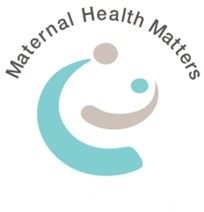Lessons learned from pilot phase of the sexual and reproductive health program in crisis and post-crisis settings in the Asia Pacific region (SPRINT Initiative)
Abstract

Inadequate human resources—both in numbers and quality—are a well documented limitati on to effective responses to public health emergencies. Although signifi cant progress has been made in the past 15 years, the literature reveals that the lack of trained health workers continues to exacerbate the marginalised emergency response to sexual and reproductive health (SRH) needs. A comprehensive response to public health, including SRH care, is essential to minimise death, illness and disability in an emergency.
The Sexual and Reproducti ve Health Program in Crisis and Post-Crisis Setti ngs in the Asia Pacifi c Region (SPRINT Initi ati ve) was designed to address SRH in all phases of the disaster cycle, with a parti cular focus on preparedness and coordinated response. It forms the basis for this case study due to the central importance of human resources for an eff ective response, and the attention devoted by SPRINT to this issue.
SPRINT was developed by the Internati onal Planned Parenthood Federati on (IPPF), United Nati ons Populati on Fund (UNFPA) and the University of New South Wales (UNSW), and launched in 2008 with funding from the Australian government.
An essential component of SPRINT is developing the capacity of nati onal health and emergency management staff to coordinate and implement priority, life-saving SRH services in conflict, postconflict and natural disaster settings.
Capacity development within the SPRINT Initiative entails training as well as on-site and remote technical support.
SPRINT’s approach is a signifi cant departure from other humanitarian training programs, in that country-level coordination teams are established and trained, rather than single individuals.
This case study specifi cally explores challenges faced by the SPRINT Initi ati ve in ensuring the effective transfer of training on SRH in humanitarian emergencies to work contexts during the SPRINT pilot program from 2008 to 2010, and the evoluti on of the Initiative’s capacity development strategy to meet these challenges.
SPRINT faced a number of challenges in building human resource capacity during its pilot phase.
These included identifying, engaging and supporting appropriate trainees in-country, developing context-relevant training content, and accounting for the lag time between training and application. Additional challenges involved addressing competing organisational mandates and priorities as well as working with the relative strength of in-country health and emergency management systems.
An important contribution to the evolution and adaptability of the program has been to situate four PhD students alongside the SPRINT Initiative to analyse experience and capture lessons. This embedded research component has proved valuable in developing solutions to the key challenges identified.
The following paper is a synthesis of the findings of these researchers on training transfer and efficacy. The challenges and lessons learned from implementing SPRINT are relevant to developing human resource capacity in the specific field of SRH in emergencies and may have broader application to the humanitarian and public health emergency sectors including the growing field of disaster risk reduction.
